
JAPANESE PRINTS
A MILLION QUESTIONS
TWO MILLION MYSTERIES
Ukiyo-e Prints浮世絵版画 |
|
formerly Port Townsend, Washington now Kansas City, Missouri |
| UTAGAWA TOYOKUNI III | |||
| 三代歌川豊国 | |||
|
1786-1865 |
|||
|
The large head in the toshidama cartouche represents Nakamura Fukusuke I in a role (鰹売) yet to be identified. I don't know but the role may be that of a bonito seller. If anyone out there knows for sure please contact me. Nakamura Fukusuke I took the name Nakamura Shikan IV in 1860. |
|||
|
|
中村福助 | ||
| Series: A Selection of the Twelve Months | |||
| Mitate juni kagetsu no uchi | |||
| 見立て十二ヶ月ノ内 | |||
| Publisher: Iseya Kanekichi | |||
| 伊勢屋兼吉 | |||
| Carver: Yokogawa Takejirō | |||
| Date: 1859, 11th Month | |||
| Ansei 6 | |||
| 安政6 | |||
| Size: 14 1/2" x 9 7/8" | |||
| Signature: Kōchōrō Toyokuni hitsu | |||
| 署名: 香蝶楼豊国筆 | |||
|
There is another copy of this print in the collection of Waseda University. |
|||
|
|||
|
Condition: It would appear that this and the other prints in this series had been bound into an album. That would not only explain the relative freshness of the colors*, but also the areas along the left side of the print where the binding holes have been restored. Other than that the print is in a good state with only very slight areas of distress and with slight soiling. |
|||
|
$620.00 NO LONGER AVAILABLE! |
|||
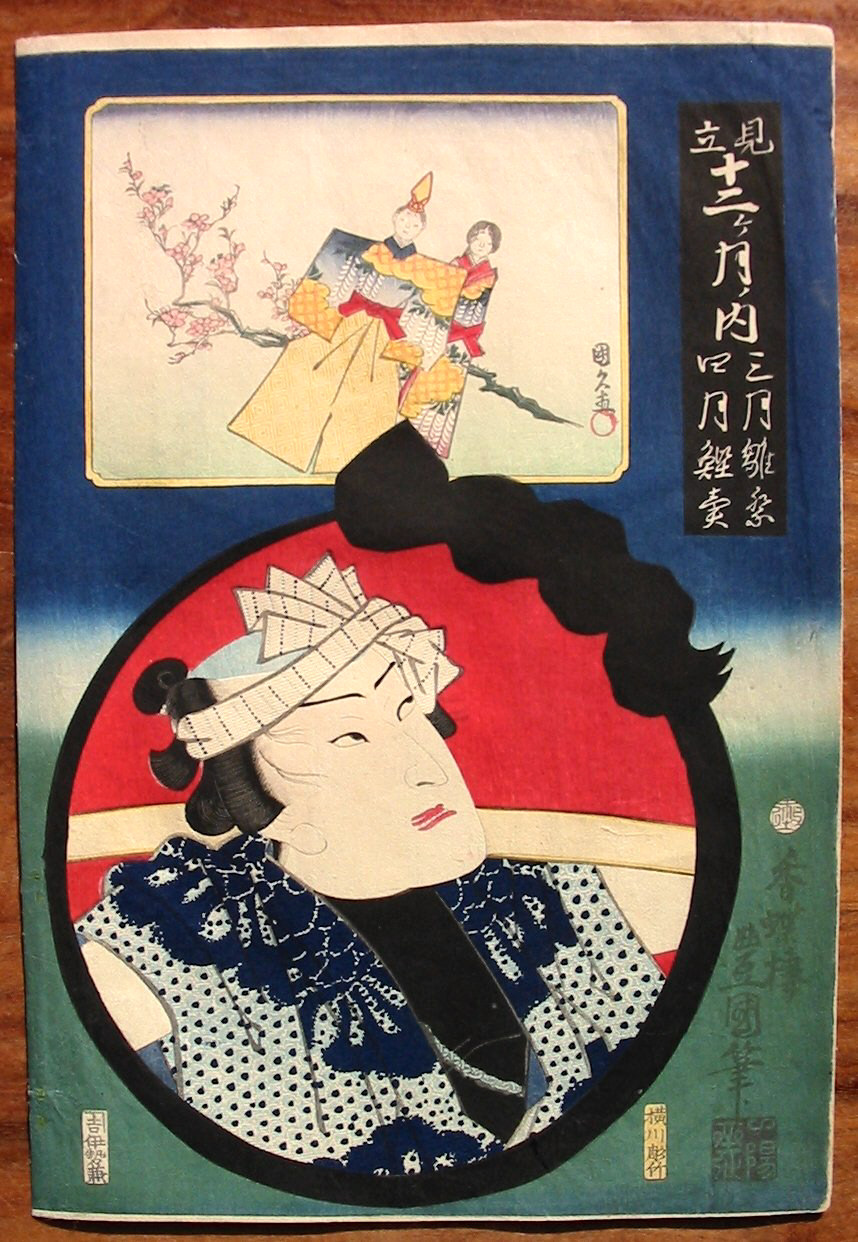
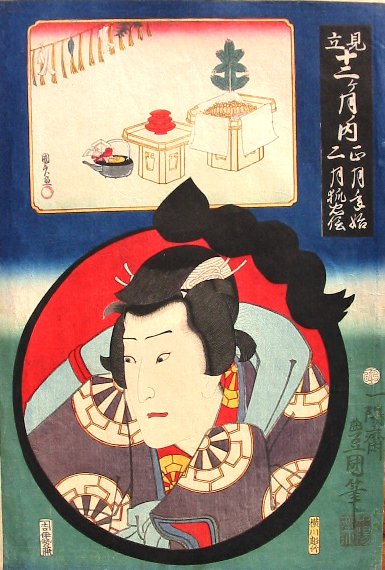 |
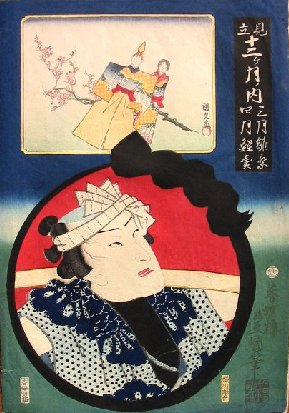 |
|
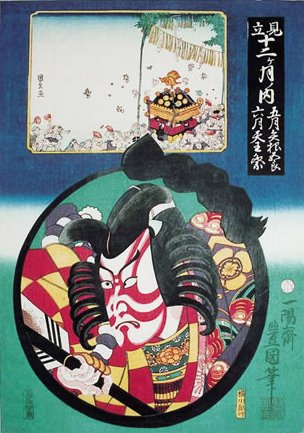 |
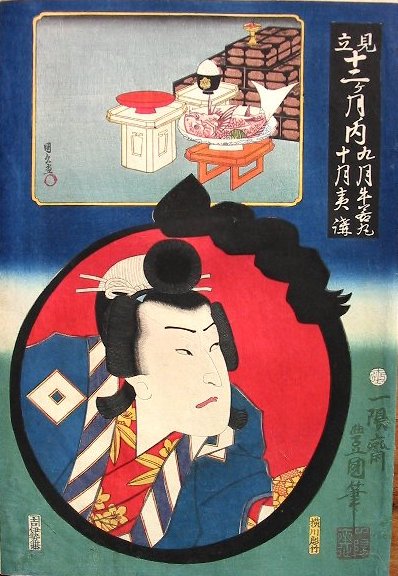 |
|
|
A SELECTION OF THE TWELVE MONTHS |
|||||
|
WE ARE OFFERING FIVE OF SIX OF THIS SERIES, BUT NOT THE FOURTH ONE FROM THE LEFT WHICH IS ALSO THE THIRD ONE FROM THE RIGHT. |
|||||
|
TACHIBINA |
||
|
立雛 |
||
|
STANDING DOLLS |
||
|
|
||
|
|
|
|
|
|
Above is a detail from a Kunisada, aka Toyokuni III, print from circa 1840. As you can see in this image the child is holding a male tachibina aloft. |
|
|
|
||
|
According to several sources girls playing with dolls in Japan is a fairly recent phenomenon. By recent they seem to mean in the last several centuries. Before that dolls were said to serve in quasi-religious and superstitional roles. Perhaps I have not read these entries correctly or with a critical enough eye because it only seems natural that little girls everywhere have played with "dolls" since time in memoriam just as little boys play at war. |
||
|
|
||
|
Lea Baten in her The Image and Motif: Japanese Dolls notes that most people think of dolls as a child's plaything, but that in Japan they "...they are certainly everything except a child's toy." (1) A few lines later she states: "If children enjoy dolls, it is only visually." (2) With the invention of tachibina made from paper "...it seems logical that these dolls were made for children by older women, as an amusement for both, and to teach children respect for their ancestors and the Imperial system." (3) Baten states definitively that prior to tachibina all dolls "...were protectors from evil forces." (4) |
||
|
|
||
|
There is no denying the talismanic use of early dolls. This has been discussed by many scholars. Crude doll-like forms were placed near infants "...to prevent them from being afflicted by misfortune." Hoko, i.e., 'crawling baby', (這子) "...were traditionally made on the same day as the birth of a child..." and served as a substitute for the baby. (5) |
||
|
|
||
|
|
||
|
|
||
|
|
||
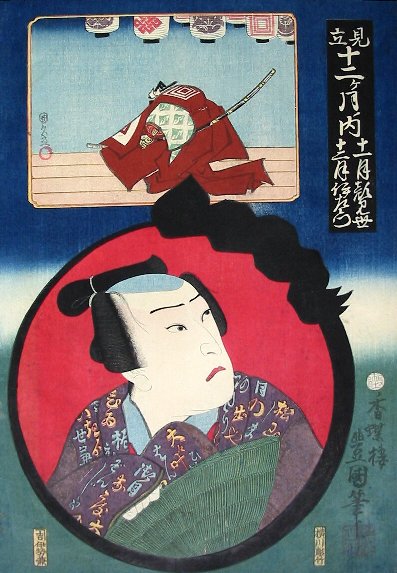

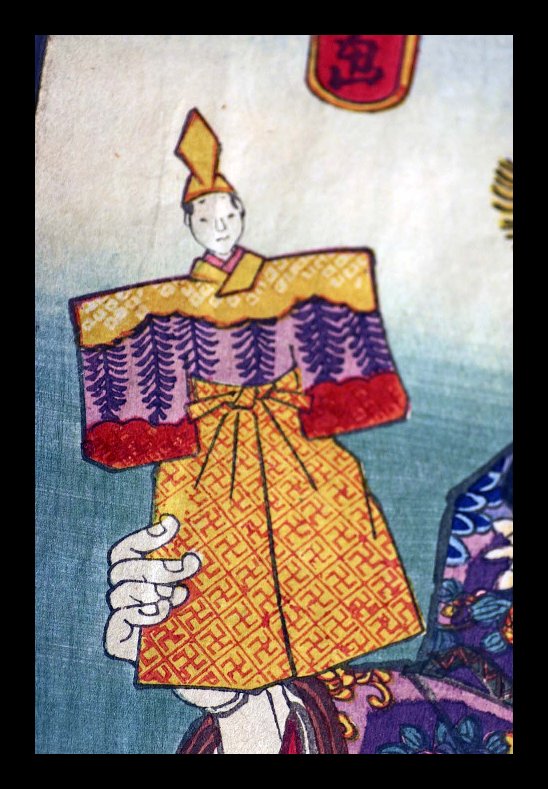
 HOME
HOME